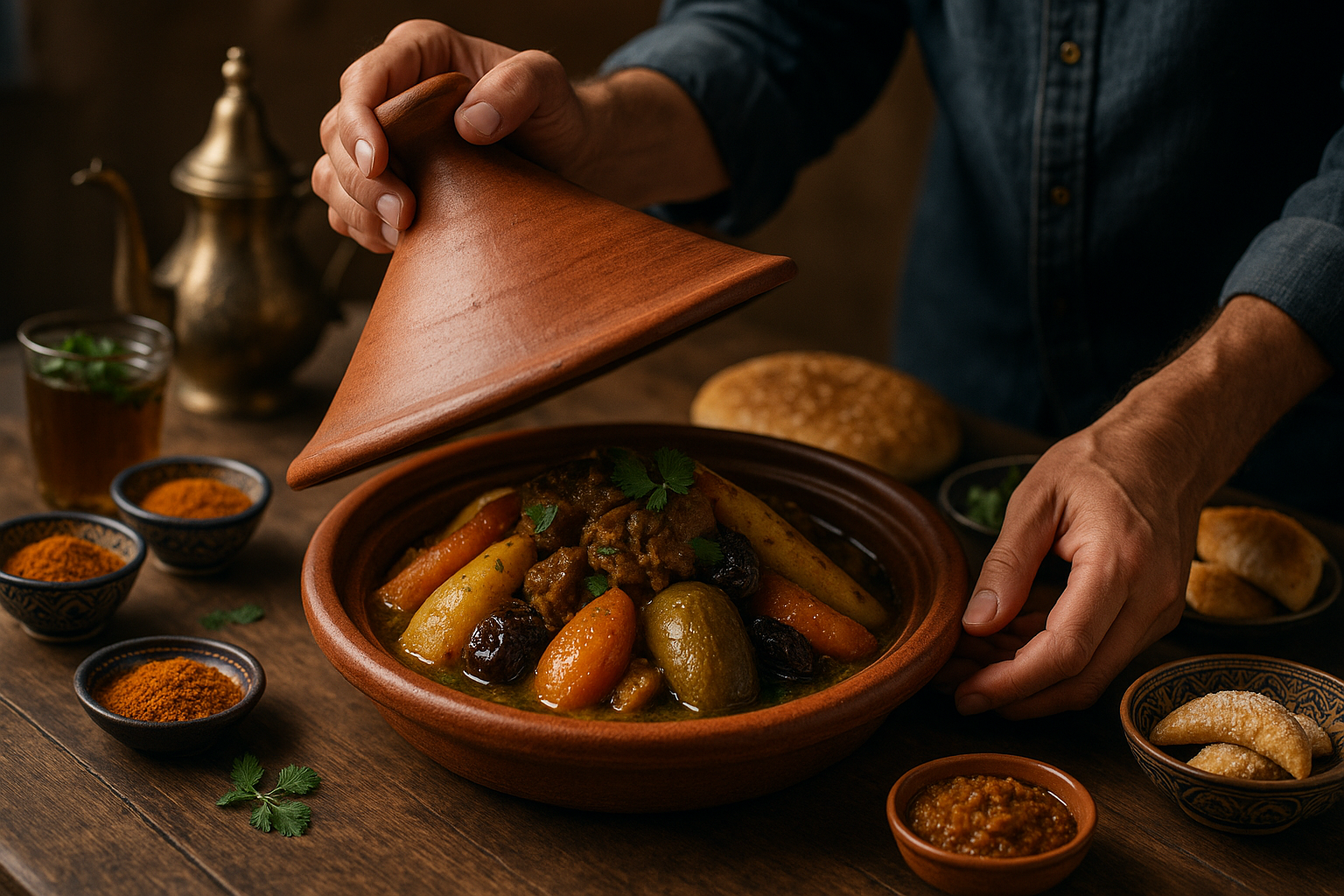Unveiling the Mysteries of Moroccan Cuisine: A Journey of Flavors
Moroccan cuisine is a captivating fusion of African, Arabian, and European influences, creating a unique culinary culture with a rich tapestry of flavors. Let's embark on a culinary journey into this gastronomical wonderland. Moroccan cuisine is a symphony of flavors that tantalizes your tastebuds. It's an exotic blend of spices, fresh ingredients, and traditional cooking methods. The cuisine is heavily influenced by Morocco's interactions and exchanges with other cultures and nations over the centuries. Every dish tells a story that takes you on a journey through time and space.

The Art of Tagine Cooking
Tagine, a slow-cooked savory stew, is a staple in Moroccan cuisine. Its name derives from the earthenware pot in which it’s cooked. The unique shape of the tagine pot enables a circular condensation process, keeping the food moist and allowing the flavors to meld beautifully. The dish usually features meat, poultry, or fish, along with vegetables, dried fruits, and a blend of exotic spices.
The Magical Medley of Moroccan Spices
Spices are the heart and soul of Moroccan cuisine, adding depth and complexity to every dish. The most commonly used spices include cumin, coriander, saffron, chilies, dried ginger, cinnamon, and paprika. Ras el hanout, a blend of up to 30 different spices, is often dubbed as Morocco’s Garam Masala.
-
Useful Insight & Trivia
-
Ras el hanout translates to ‘head of the shop’, implying it’s the best (or top) spice blend the seller has to offer.
-
Preserved lemons, a unique Moroccan ingredient, are lemons that have been pickled in salt and their own juices. They add a distinct tangy flavor to many dishes.
-
The Sweet Side of Morocco: Pastries and Mint Tea
Moroccan desserts mostly revolve around pastries, often filled with almond paste and drizzled with honey. The most recognizable is probably the ‘Baklava’. Ending a Moroccan meal without a glass of mint tea is almost unthinkable. It’s more than just a drink; it’s a sign of hospitality, friendship, and tradition.
The Role of Bread in Moroccan Food Culture
Bread is an integral part of Moroccan meals and is considered sacred. It’s used as a utensil to scoop up food and soak up the delicious sauces. The most common type is ‘Khobz’, a round, crusty bread.
To conclude, Moroccan cuisine is a vibrant and flavorful culinary tradition that deserves a closer look. Its rich history, unique ingredients, and traditional cooking methods offer a culinary adventure like no other. It’s a journey of flavors that not only satisfies your palate but also enriches your understanding of the world’s culinary landscape.





